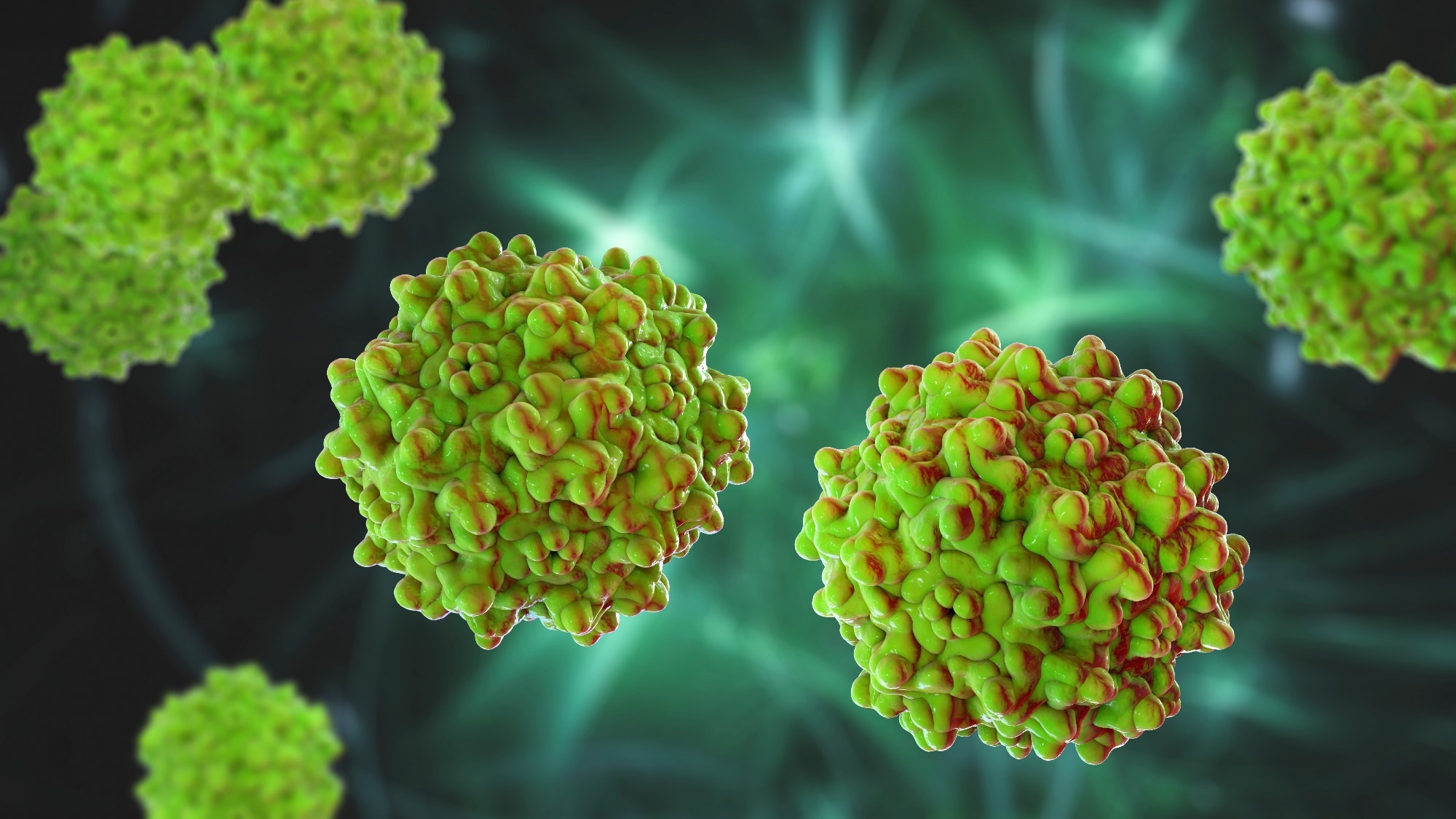 By Pooja Toshniwal PahariaReviewed by Lauren HardakerMay 28 2025
By Pooja Toshniwal PahariaReviewed by Lauren HardakerMay 28 2025In a study published in Nature Biotechnology, researchers have enhanced the genome editing capabilities of Obligate Mobile Element Guided Activity (OMEGA)-IscB, an endonuclease protein, through evolution-guided redesign.

Image Credit: Kateryna Kon/Shutterstock.com
Genetically modifying natural enzymes can enhance their properties and broaden their applications in molecular biology. Enzymatic reprogramming aids in developing disease models, which could inform therapeutic strategies.
Developing enzyme systems that are efficient, specific, safe, and compact enough for precise delivery via adeno-associated viruses (AAVs) has been a persistent challenge for researchers.
One promising candidate is OgeuIscB, an RNA-guided nuclease from the IscB family with strong potential for editing mammalian genomes. However, its utility has been limited by low target specificity, largely due to its short effective guide length of just 16 nucleotides (nt).
OMEGA-IscB, a precursor of CRISPR-associated protein 9 (Cas9), is a promising tool for genetic editing because of its compact size, fewer than 600 amino acids (aa), facilitating delivery. As an RNA-guided endonuclease, OMEGA-IscB uses specific RNA (ωRNA) to precisely cleave DNA. The longer length of ωRNA acts as a scaffold, supporting complex molecular interactions.
This study highlights the potential of natural protein diversity to develop more effective protein systems by improving IscB efficiency and specificity while maintaining functionality for epigenome editing applications.
About the Study
In this study, researchers used evolutionary principles to redesign IscB, improving its efficiency and specificity. They investigated different IscB orthologs for compatibility with longer guide RNAs (20 nt).
By combining ortholog screening, structure-based protein design, and deep learning-facilitated structural predictions, researchers developed a new variant, NovaIscB. Building upon OrufIscB, the most potent ortholog identified, NovaIscB was fused with methyltransferases to build a transcriptional repressor system, OMEGAoff.
The scientists hypothesized that increasing the protein surface area could enhance the guide length effectiveness and specificity by improving interactions with the guide:target heteroduplexes. They analyzed the structural evolution of IscBs and Cas9s using AlphaFold2 modeling and conducted multiple sequence alignment using fast Fourier transform (MAFFT).
Next, the team inserted various recognition lobes (RECs) and domain segments into the wild-type OrufIscB to improve RNA:DNA heteroduplex recognition. The variant OrufIscB-REC, containing REC domains from Nba-1, demonstrated improved target recognition and high mismatch detection efficiency.
OrufIscB-REC chimeras were tested for DNA cleavage activity using human embryonic kidney 293 FT (HEK293FT) and alpha mouse liver 12 (AML12) cells. The in vitro transcription-translation (IVTT) assays, cell-free transcription-translational assays, tagmentation-based tag insertion site sequencing (TTISS), and target-adjacent motifs (TAM) screens tested cleavage efficiency.
Rational mutagenesis of OrufIscB-REC was also conducted to improve genome editing efficiency. The triple mutant, OrufIscB-KRK, with E137K, E409R, and I533K mutations, showed significantly increased activity but reduced specificity.
Subsequently, researchers replaced loops protruding from the Nba-1 REC domain with those belonging to REC domains in three regions: two RNA-DNA duplex-facing loops and a potential duplex-facing loop in the conserved REC zinc finger.
In the in vivo analysis, the team injected proprotein convertase subtilisin/kexin type 9 (PCSK9) targeting ωRNAs and AAV-encoding OMEGAoff into the tissue behind the lens in the eyes of mice.
After injection, they measured PCSK9 and total cholesterol in the mice serum. After six months, serum alanine aminotransferase (ALT) and total bilirubin levels were assessed to evaluate OMEGAoff toxicity.
Results
NovaIscB is compact (614 aa) and has an associated ωRNA variant (166 nt) to support optimal use of 20-nt guides. The protein demonstrated significantly higher efficiency and specificity with maintained functionality compared to the wild-type OgeuIscB, achieving up to 40-fold indel activity, i.e., a 100-fold improvement. The incorporation of REC domains that improved DNA interaction likely improved the efficiency.
NovaIscB demonstrated genome-level targeting specificity comparable to SpCas9, the current gold standard, with 14 % of TTISS reads due to off-target activity. The finding suggests that NovaIscB could be a viable alternative for genome editing in various biological systems, with its compact size making it ideal for use in vivo.
The OMEGAoff gene repressor could be packaged into a single AAV vector for stable epigenetic alterations in vivo. OMEGAoff repressed target genes, as indicated by the significantly reduced PCSK9 and total cholesterol levels. The repressor achieved persistent knockdown without DNA breaks.
The findings suggest OMEGAoff as a safer substitute to conventional genetic editing practices involving DNA excision. OMEGAoff did not significantly alter liver function in the murine models, highlighting the safety of OMEGAoff use.
The study demonstrates that evolution-guided molecular engineering of IscB endonuclease proteins can generate variants such as NovaIscB with improved efficiency and specificity for epigenome editing.
Delivering OMEGAoff using AAVs enables efficient epigenome modification in tissues targeted using AAV serotypes. Unlike zinc finger domain-containing proteins, OMEGAoff is simple to reprogram, allowing for rapid synthesis of various gene-targeting compositions.
Journal Reference
Kannan, S., et al. (2025). Evolution-guided protein design of IscB for persistent epigenome editing in vivo. Nat Biotechnol. DOI: https://doi.org/10.1038/s41587-025-02655-3 , https://www.nature.com/articles/s41587-025-02655-3